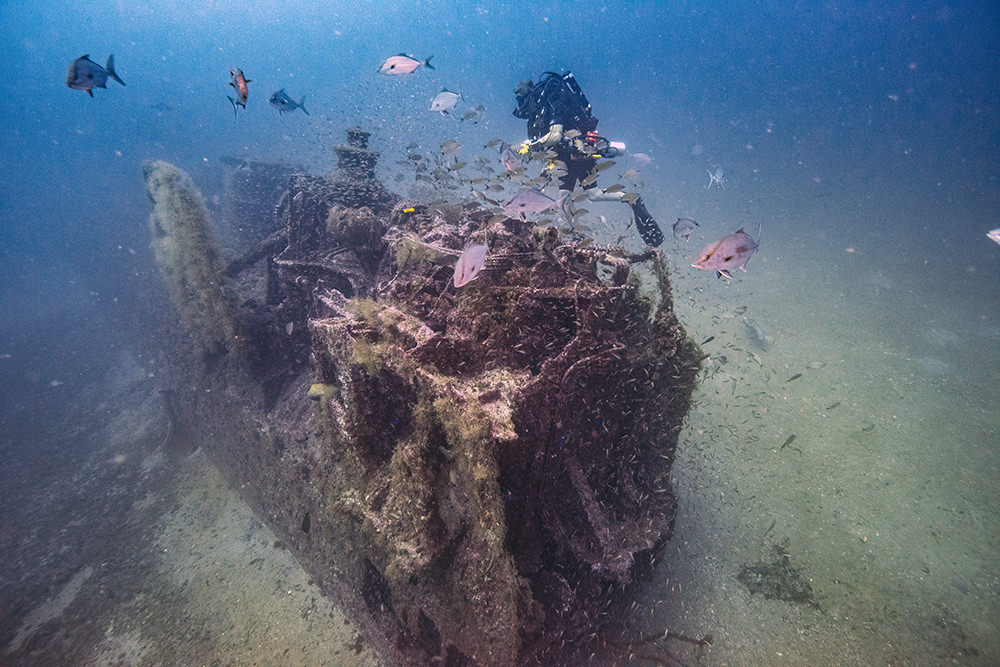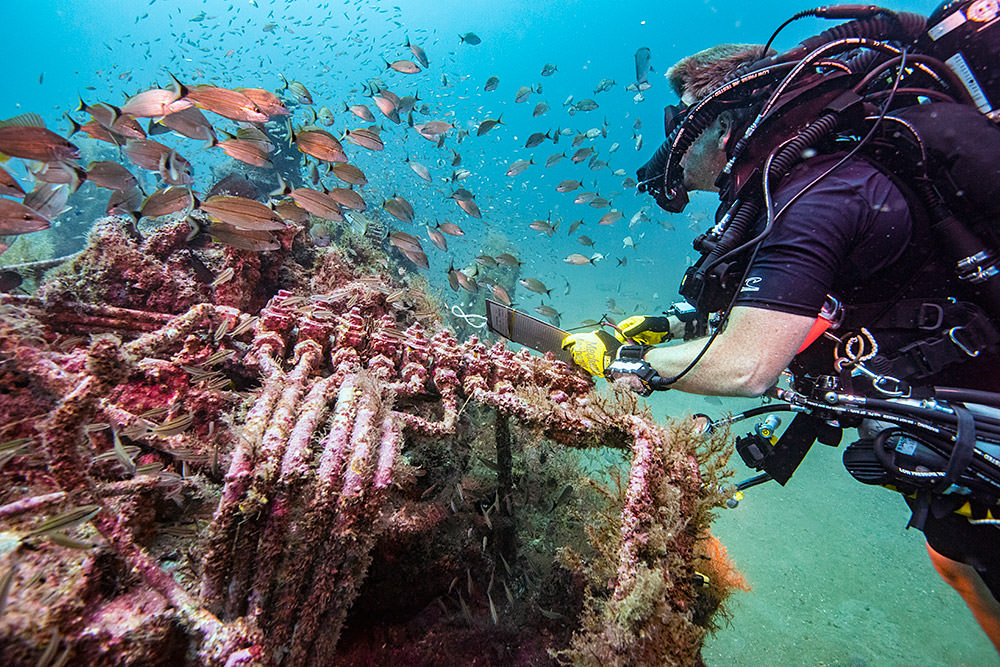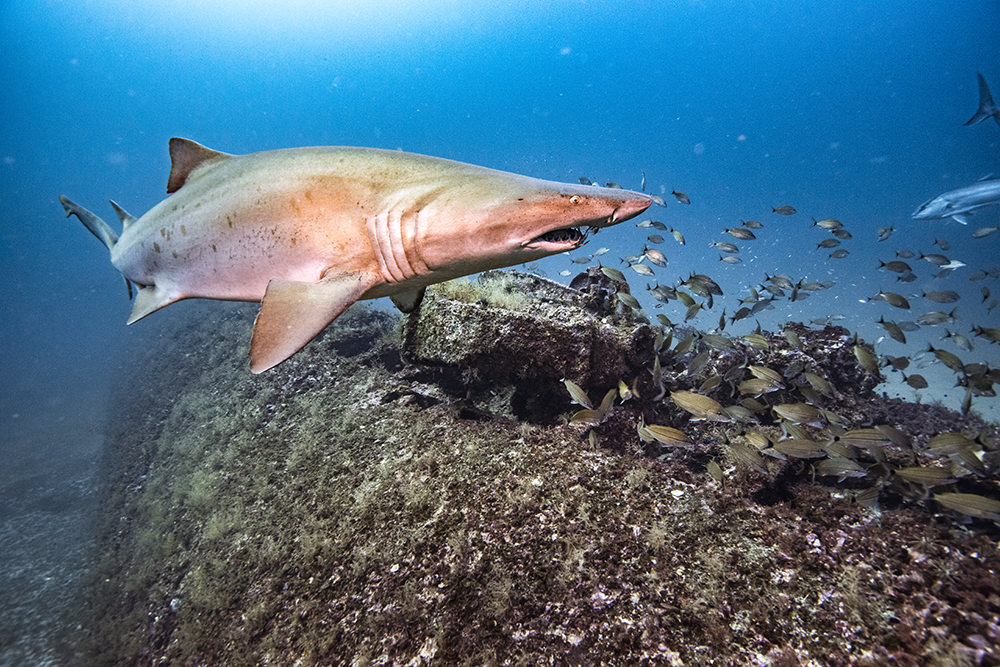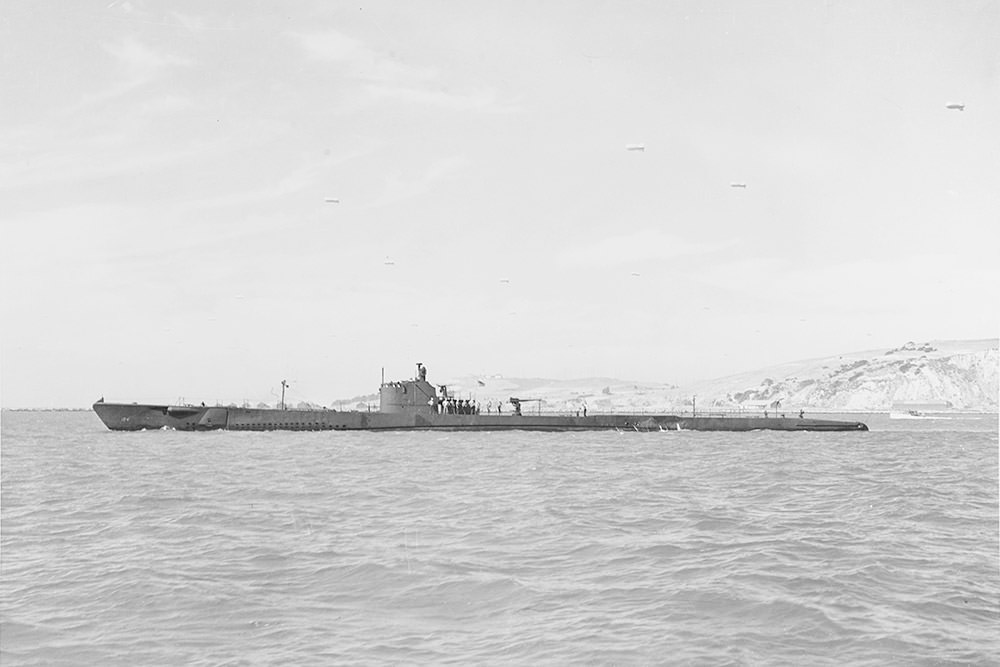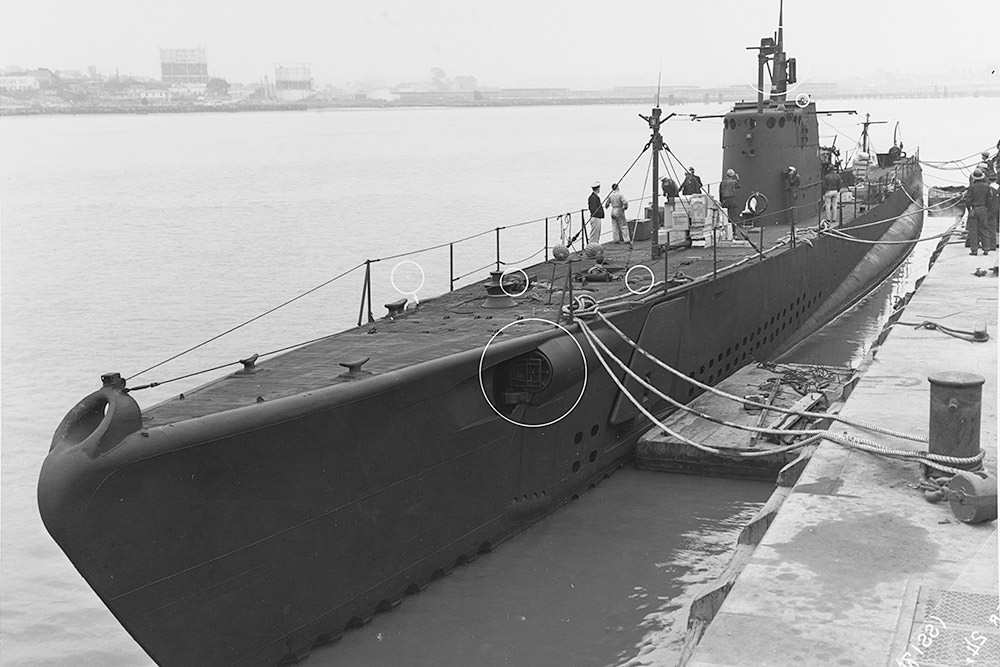ex-USS Tarpon
Ship Stats
Depth: 135 feet
Vessel Type: United States Navy submarine (Porpoise class)
Length: 298 feet Breadth: 25.1 feet
Gross Tonnage: 1990 tons submerged Cargo: N/A - warship
Built: 1936, Electric Boat Co., Groton, Connecticut, USA
Owner: United States Navy
Date Lost: August 26, 1957
Sunk By: Sank while under tow to the salvage yard
Survivors: Unmanned during sinking
Data Collected on Site: Still photography, photogrammetry, high resolution multibeam
Significance: ex-USS Tarpon (SS-175) won seven battle stars against the Japanese during World War II and was the first U.S. submarine in World War II to sink a German raider in the Pacific.
Wreck Site
At a depth of 135 feet, the hull sits upright with a slight tilt to port. Sealife at the submarine is prolific and typical of a sub-tropical marine ecosystem. The site is heavily encrusted with coralline algae and supports an array of cnidarians, such as sea anemones and corals. Tarpon also typically has several sand tiger sharks on site, which can provide dramatic photographic subjects while enjoying this historic shipwreck dive.
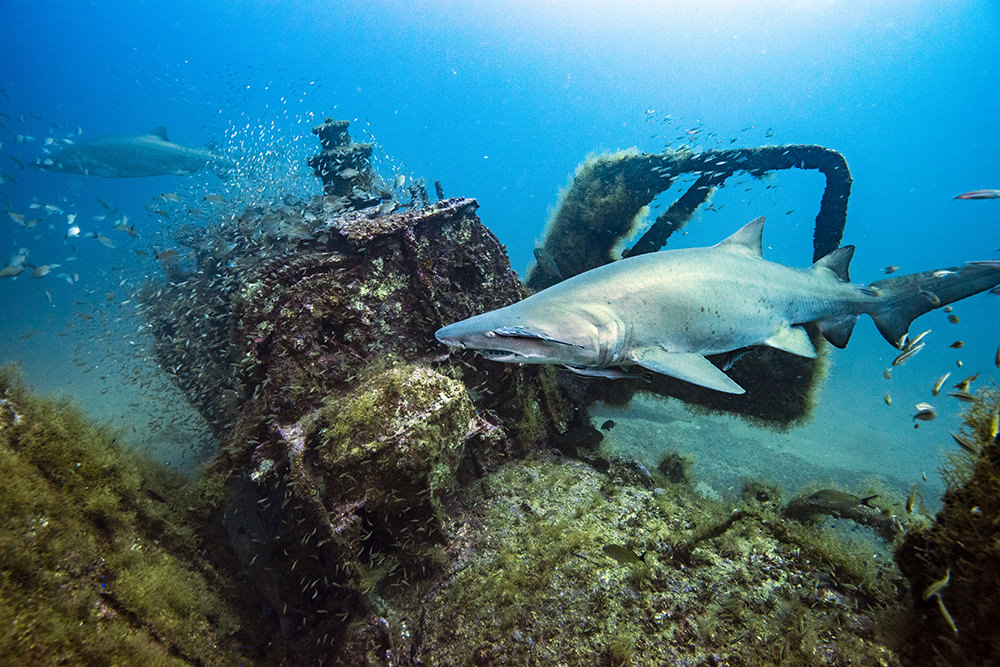
Historical Background
The ex-USS Tarpon launched on September 4, 1935, and was commissioned on March 12, 1936. It operated out of San Diego and Pearl Harbor for several years and then moved to the Philippines. Two days after the attack on Pearl Harbor, Tarpon, along with 17 other submarines, departed the Philippines to begin their first war patrol. Tarpon ended the patrol on January 11, 1942, without firing a single torpedo. During its second patrol, the Tarpon fired four torpedoes at a freighter; one hit and then they fired two more, both hitting the target. Assuming the submarine was sinking, Tarpon left the area; however, the Japanese never confirmed that the ship actually sank.
On February 11, 1942, Tarpon investigated a surface contact and was illuminated by the enemy ship's searchlight. The Tarpon went deep, but was severely jolted by four depth charges that knocked out the bow planes, rudder angle indicator, and port annunciator. Then, on February 24, the Tarpon ran aground while attempting to navigate Boling Strait. With the ever threat of Japanese planes spotting their location, the Tarpon attempted to refloat the submarine by lightening the ship, but the attempt failed and there was nothing they could do except wait for high tide.
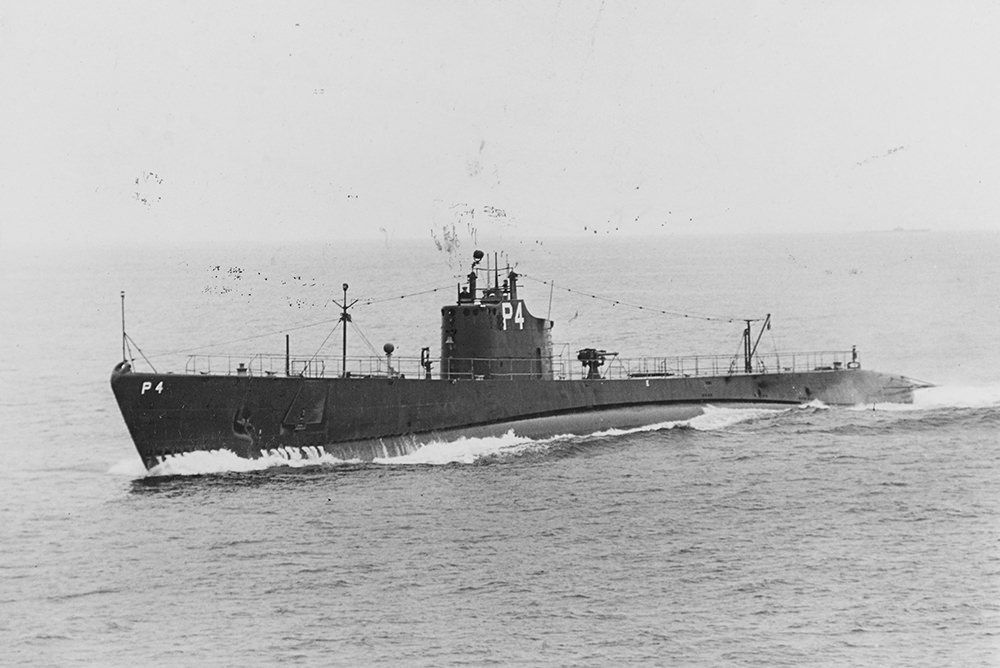
During the Tarpon's third, fourth, and fifth patrols, the ship returned to Pearl Harbor without incident. While in Pearl Harbor the Tarpon was refitted and began its next patrol on January 10, 1943, patrolling Japanese home waters, south of Honshu. On that patrol, the Tarpon sank the Fushima Maru, a passenger/cargo ship, and the Tatsuta Maru, a military personnel transport ship.
On the night of October 16, 1943, the Tarpon was patrolling the approaches to Yokohama when it sighted a ship that it tentatively identified as a large auxiliary. After tracking it, the Tarpon fired four torpedoes, which stopped the enemy ship dead in the water, but it did not sink. Finally, on the Tarpon's third attack of the ship, it sank. It was later identified as the German raider Michel (Shiff-28) and was the first German raider sunk by a U.S. submarine in the Pacific.
After a few other uneventful patrols, the Tarpon's next patrol was located at the Marshall Islands, from December 1943 to January 1944. Its primary mission was to photograph the various atolls. Then, from June to August 1944, the Tarpon preformed lifeguard duty in the Truk area, but made no rescues. However, in July during that patrol, the Tarpon encountered several enemy ships and inflicted considerable damage on one.
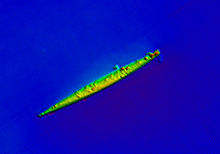
Tarpon's final patrol was from August 31 to October, 1944, which once again consisted of lifeguard duty in the Truk area. When the ship finally returned to Pearl Harbor, it was ordered to the East Coast, and left Pearl Harbor on Christmas Eve, 1944, arriving in New London, Connecticut on January 17, 1945.
After operating on the East Coast, the Tarpon was decommissioned at Boston on November 15, 1945. Early in 1947, the submarine was scheduled for duty as a Naval Reserve training ship and left Boston under tow on March 28. It arrived at New Orleans in early April and was placed in service. The Tarpon served as a training submarine in the 8th Naval District until placed out of service and struck from the Navy list on September 5, 1956. The submarine was sold to be broken up for scrap, and sank on August 26, 1957, while under tow off the coast of Cape Hatteras, North Carolina. The Tarpon received seven battle stars for its World War II service.
